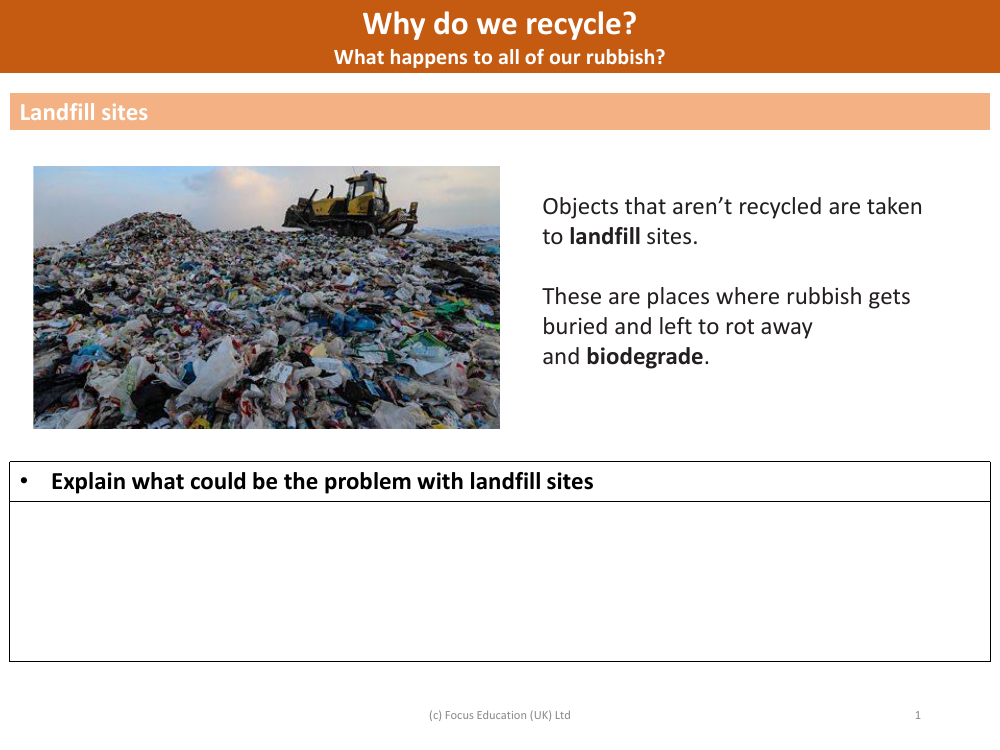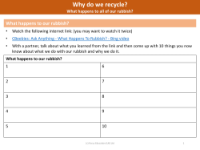What happens to all of our rubbish? - Explanation - Worksheet

Geography Resource Description
Landfill sites are designated areas where non-recycled waste is taken to be disposed of. The primary method of waste management at these sites involves burying the rubbish and leaving it to decompose over time. However, this process of waste decomposition in landfills poses significant problems. As the rubbish rots away, it can release harmful gases and chemicals into the environment, which can lead to air and water pollution. Additionally, landfill sites take up valuable land space and can become a source of unpleasant odours. The decomposition process is also very slow, meaning that waste can remain in the environment for many years, contributing to the growing issue of environmental degradation.
Recycling is a crucial practice to mitigate the negative impacts of landfill sites. It involves the process of converting waste materials into new products, thereby reducing the amount of rubbish that ends up in landfills. Recycling helps to conserve natural resources, save energy, and reduce pollution. When we recycle, we not only help to cut down the volume of waste in landfills but also support a sustainable approach to managing the rubbish we generate. Understanding the consequences of landfill sites prompts the question: What happens to all of our rubbish? The answer lies in the importance of recycling and the collective efforts required to manage waste responsibly.




